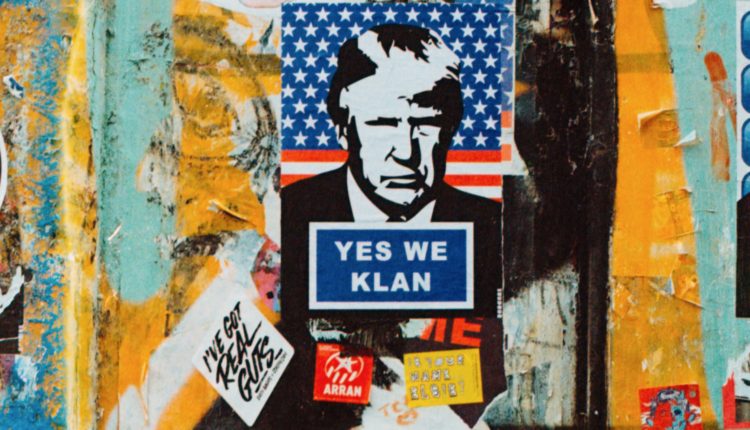 Photo by Annie Spratt
Photo by Annie Spratt
Three essential books for decoding Trump’s America
Suffering the time of Trump is bad enough. Living through it blind to where it all comes from—the racism, the anger, the collective delusions and paranoia—would be worse.
I read everything I can to understand where we are and how we got here. Three books have helped me see through the sound and the fury and chaos that define the Trump administration. They are ‘Dark Money,’ ‘Border Wars,’ and ‘White Trash.”
‘Dark Money: The Secret History of the Billionaires Behind the Rise of the Radical Right, by Jane Mayer, is a tour de force of investigative journalism and analysis that exposes and explains how a miniscule cabal of some of the richest most right-wing people in the nation hijacked American politics.
Focusing on the outsized role of billionaires David and Charles Koch and a few other titans of business or inheritors of vast wealth, Mayer tells a compelling story about how “in the course of a few decades a handful of enormously rich right-wing philanthropists changed the course of U.S. politics.” The Koch’s “philanthropy,” while it included some support of the arts and sciences, was largely self-serving. Their focus was on funding advocacy groups and think tanks that espoused a free for all version of capitalism without any government protection for consumers or workers.
This triumph of plutocracy over democracy began in the 1970s when “a handful of the nation’s wealthiest corporate captains felt overtaxed and overregulated and decided to fight back. Disenchanted with the direction of modern America, they launched an ambitious, privately financed war of ideas to radically change the country. They didn’t want to merely win elections; they wanted to change how Americans thought. Their ambitions were grandiose—to “save” America as they saw it…by turning the clock back to the Gilded Age before the advent of the Progressive Era. Charles Koch was younger [than his brother David] and more libertarian than his predecessors …but, if anything, his ambitions were even more radical: the pull the government out at “the root.”
‘Border Wars: Inside Trump’s Assault on Immigration,’ by Julie Hirschfeld Davis and Michael D. Shear, tells the story of how longstanding U.S. immigration policy, based on the American consensus on immigration as a good thing, was turned on its head by a small group of previously obscure but relentless anti-immigration advocates.
Inside the Trump administration, and with strong urging and support from anti-immigration organizations whose representatives often participated in their meetings, they plotted constantly. Led by Stephen Miller, a fanatical anti-immigration official in the administration who, by hook or crook and aided by the chaos in the Trump administration, carved out for himself a huge role in immigration policy. Miller’s goals and that of his allies and acolytes were to reduce legal immigration drastically, to abolish the DACA program that protects the so-called Dreamers, to eliminate the Temporary Status (TPS) program that allows immigrants from countries ravaged by natural disasters or violence to stay and work here, to cut the number of refugees accepted into the United States to zero, and to increase immigration enforcement both on the border and in other areas of the country. Their agenda would effectively destroy the self-image—and the global image—of the United States as “a nation of immigrants.”
Amazingly, in the end the zealots won almost all the fights, despite the resistance of much heavier weights in the administration like Gary Cohn, Trump’s chief economic adviser, the acting head of Homeland Security, and members of the Trump family who are also administration officials, including Ivanka Trump and Gerald Kushner. The anti-immigration extremists got most of their agenda through despite powerful opponents in Congress (Paul Ryan, then Speaker of the House), and pushback from business, including both the new high-tech elite and the old Chamber of Commerce business community. That’s a reflection of the strong commitment to a xenophobic world view among Trump’s most hard-core supporters.
‘White Trash’ sounds like the title of a very biased attack against working class and poor whites. It is anything but. Instead, it is a piercing critique of the American fairy tale of the United States as a society without classes, a meritocracy providing opportunity to all. Instead, class has been a defining factor for people’s life chances (like the odds of acquiring wealth, enjoying good health, and living a long life) from the early colonial era to the present moment. The existence of a huge class of white people who have never been able to attain the American Dream brings into question that very concept and therefore has always been denied and substituted by more comforting tales about a thoroughly middle-class country, even an affluent society.
Although “White Trash’ was written before the election of Trump, its analysis of class in America helps to explain his rise. The existence of this ignored class was a gold mine for a demagogue bent on mobilizing long pent-up resentments and directing it against scapegoats like immigrants, minorities and the so-called liberal elite.
These three excellent works bear witness to the harsh reality of this moment and help us make sense of how we got here. Where we go from there will depend on what we do in the next year. Will Trump be the harbinger of a new racist right-wing era or will he be the last of a species of dinosaur that should have gone extinct long, long ago in America.


